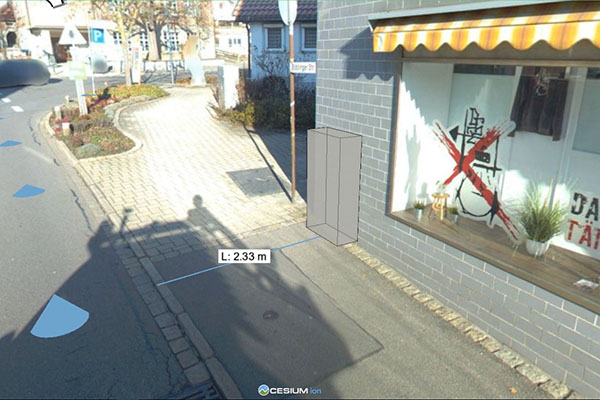Until now, however, there was always one small but crucial detail that could not be planned from a desk, but always required on-site inspections and measurements, namely where to position the network distribution boxes from which the individual fiber optic cables branch out to customers’ homes. The only viable method by which the planners could identify a suitable location was for them to make a time-consuming personal visit to the site. Our Fibre3D software package now provides an alternative solution in the form of an interactive 3D visualization of the target area based on panoramic images and point clouds. Fibre3D allows planners to immerse themselves in a three-dimensional world, to virtually position the boxes and thus find the most suitable location from the comfort of their office desk. Measurement functions and true-to-scale projections allow for a speedy inspection of even the most technically challenging locations. The integration of additional information such as the presence of underground pipes and cables facilitates the evaluation of different configurations. Once digital planning is complete, instructive photomontages can be generated directly from the tool for inclusion with the application documents to secure the site. This realistic impression also makes it easier to obtain approval from authorities responsible for maintaining the route.
Fibre3D has already been successfully deployed in practice, providing planning support for the positioning of distribution boxes. This software solution shows convincingly that a complete digitization of the planning, verification and approval processes can significantly accelerate the expansion process. The next stage of roll-out will see performance optimizations being made and the use of the software by external partners of Deutsche Telekom.

 Fraunhofer Institute for Computer Graphics Research IGD
Fraunhofer Institute for Computer Graphics Research IGD